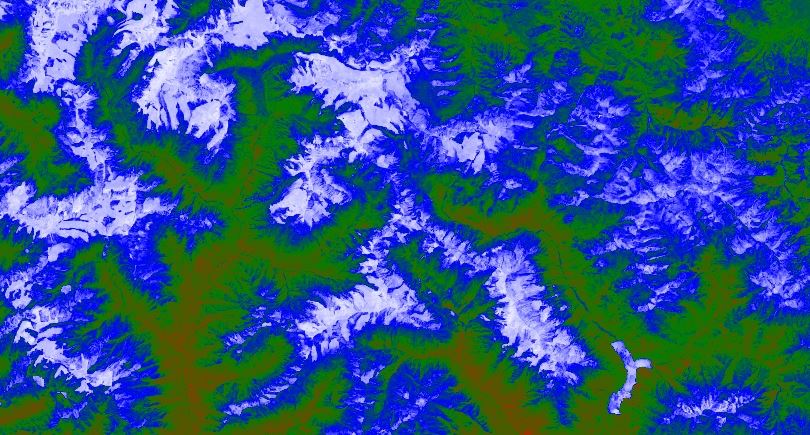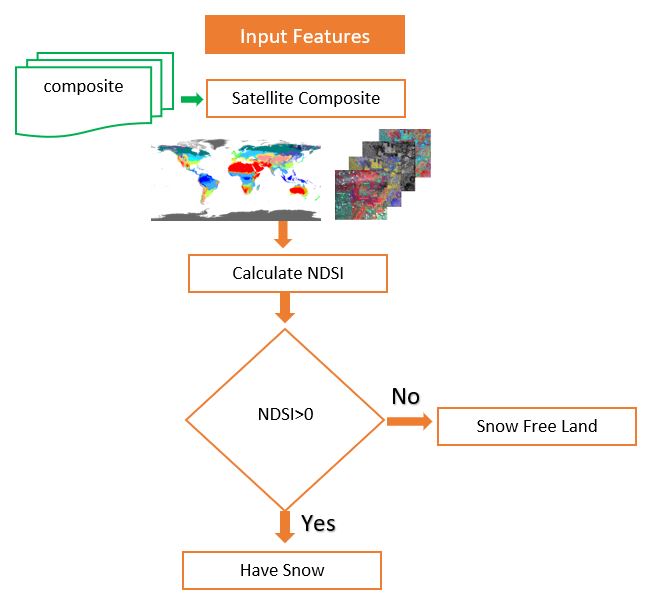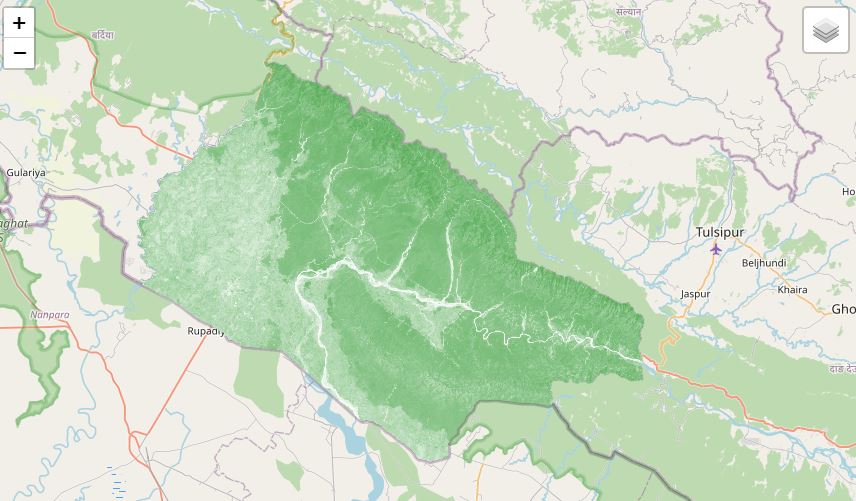Normalized Difference Snow Index (NDSI)

Published on May 17, 2020 | Bikesh Bade | 6293 Views
NDSI is a measure of the relative magnitude of the reflectance difference between visible (green) and shortwave infrared (SWIR). It controls the variance of two bands (one in the near-infrared or short-wave infrared and another one in the visible parts of the spectrum). This is useful for snow mapping.
What is NDSI in remote sensing?
The Normalized Difference Snow Index (NDSI) snow cover is an index that is related to the presence of snow in a pixel and is a more accurate description of snow detection as compared to Fractional Snow Cover (FSC). Snow typically has very high visible (VIS) reflectance and very low reflectance in the shortwave infrared (SWIR), a characteristic used to detect snow by distinguishing between snow and most cloud types.
How to calculate NDSI?
NDSI is a measure of the relative magnitude of the reflectance difference between visible (green) and shortwave infrared (SWIR). To calculate the ratio of the two bands taken and composed in a satellite image in a specific time and location
NDSI =(Green-SWIR) / (Green+SWIR)
How does NDWI work?
Snow cover is detected using the NDSI ratio of the difference in VIS and SWIR reflectance; N A pixel with NDSI > 0.0 is considered to have some snow present. A pixel with NDSI <= 0.0 is a snow-free land surface.
How to interpret NDWI images?
NDSI results are presented as a color map, where each color corresponds to a certain range of values. There’s no standard color palette, but most software uses the color palette similar to NDSI.
Palette:['red', 'green', 'blue', 'white']
Application of NDSI
NDSI has mostly been used for assessments of
-
Snow cover Detection
-
Snow Mapping
-
To discriminate snow and clouds
-
To accurately detect glacier ice in complex shadowed terrain
-
To detect the frozen lake
-
Glacier mapping
Limitation
Though the NDSI is a robust technique for snow detection it does have limitations. Discrimination of cloud from snow is very challenging because some types of clouds and snow can have very similar reflectance characteristics and NDSI values. The algorithm is reflectance-based, thus it depends on enough reflectance from the surface, any surface, in the Visual and SWIR bands, and a difference in the amount of reflectance between Visual and SWIR bands, for the NDSI calculation to give a reliable result.
Snow typically has low SWIR reflectance, less than about 0.10, because it absorbs SWIR. Snow mixed with vegetation or other features may have a higher SWIR caused by SWIR reflectance from vegetation, yet may have a relatively high NDSI value. There is a wide range of SWIR reflectance and NDSI values associated with snow cover in different land covers and viewing conditions.






